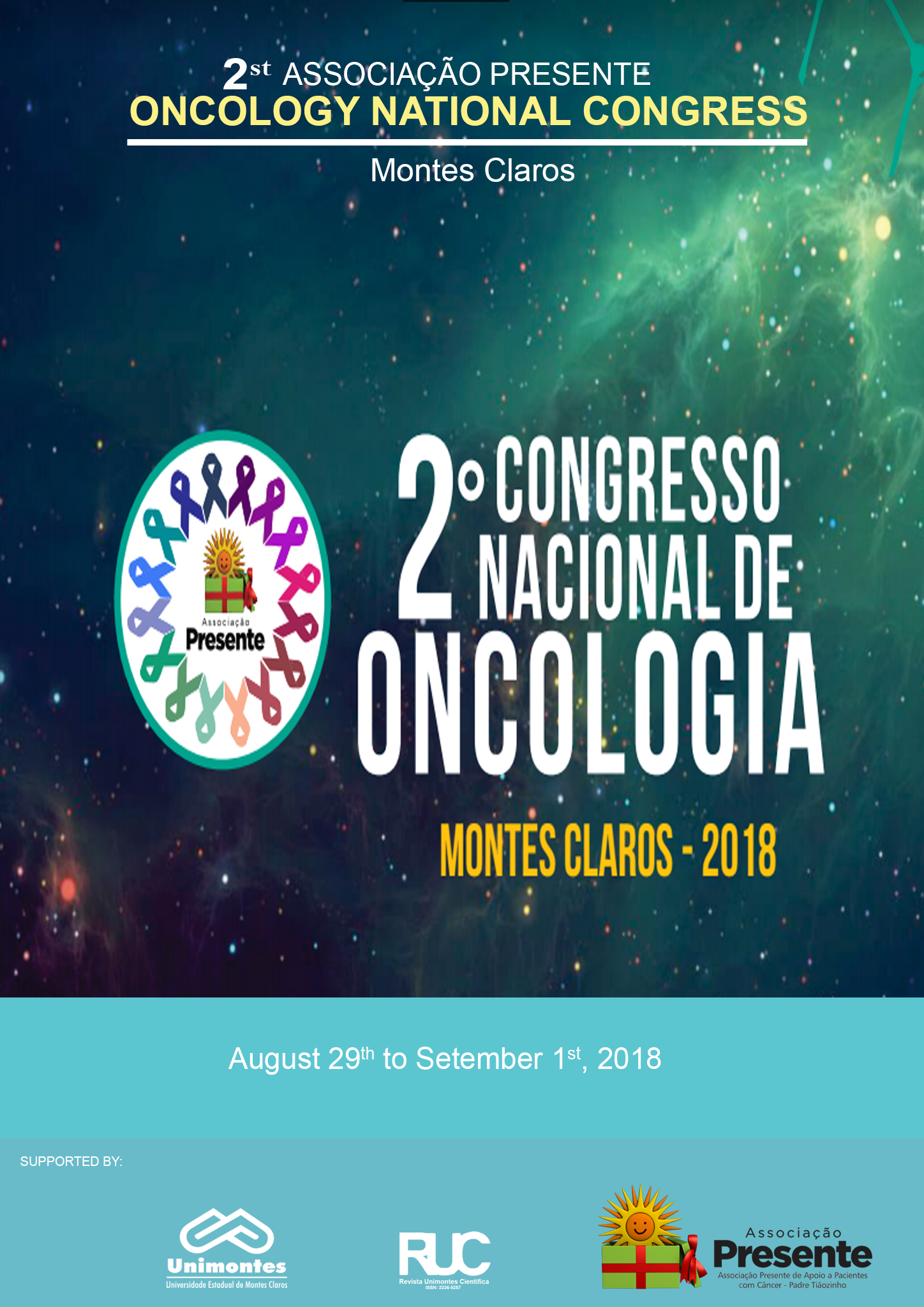Profile of morbimortality by maligna neoplasia of esôfago among the brazilian regions in the period 2008-2017
Keywords:
Esophagus Neoplasms; Health Profile; Public health; Neoplasias Esofágicas; Perfil de saúde; Saúde pública.Abstract
PERFIL DE MORBIMORTALIDADE POR NEOPLASIA MALIGNA DE ESÔFAGO ENTRE AS REGIÕES BRASILEIRAS NO PERÍODO DE 2008-2017
Resumo: Objetivo: analisar os perfis epidemiológicos, socioeconômico e sociodemográfico para melhor efetividade de ações intervencionistas e políticas em saúde por neoplasia maligna de esôfago. Métodos: investigação de caráter descritivo, retrospectivo e quantitativo. A população foi portadores de neoplasia maligna do esôfago, internados por região, no período de 2008 a 2017. Os dados foram obtidos do Sistema de Informações Hospitalares do SUS (SIH/SUS). Resultados: Registraram-se um maior número de casos da doença na faixa etária de 50 a 69 anos 60,28% (n=96.315), homens 76,45% (n=122.162), cor branca 41,10% (n=66089). A região Sudeste apresentou o maior número de internações 58,86% (n=81269) e a região Norte o menor 1,97% (n=3157). Verificou-se a predominância de óbitos 16,52% (n=13429) na região Sudeste. A região Norte apresentou a menor prevalência de internações (2 casos/100mil), menor número de óbitos, mas a maior taxa de mortalidade 19,16% (n=605), em contrapartida a região Sul apresentou a maior prevalência da doença (14,4/100 mil), mas a menor taxa de mortalidade 14,91% (n=6220). Conclusão: Verificou-se um aumento no número de internações, em todas as regiões brasileiras (47 a 124%). O número de internações e óbitos por neoplasia de esôfago foi maior na região Sul e Sudeste. O setor privado demonstrou um gasto muito superior em relação ao público. O sexo masculino e a faixa etária em 50-69 anos, concentram os maiores números de internação e ocorrem com mais frequência no caráter de urgência. Tal fato pode ser atribuído a ineficácia de políticas de saúde acerca de informação e controle dessa doença.
Abstract: Objective: to analyze the epidemiological, socioeconomic and sociodemographic profiles for better effectiveness of interventionist actions and health policies for malignant esophageal neoplasia. Methods: descriptive, retrospective and quantitative research. The population had malignant esophageal neoplasia, hospitalized by region, from 2008 to 2017. Data were obtained from the Hospital Information System of SUS (SIH / SUS). Results: The largest number of cases of the disease were registered in the age 50 to 69 years (60.28%) (n = 96.315), males 76.45% (n = 122.162), white color 41.10% 66089). The Southeast region presented the highest number of hospitalizations 58.86% (n = 81269) and the North region the lowest 1.97% (n = 3157). The prevalence of deaths was 16.52% (n = 13429) in the Southeast region. The North region had the lowest prevalence of hospitalizations (2 cases / 100,000), the lowest number of deaths, but the highest mortality rate was 19.16% (n = 605). , 4/100 thousand), but the lowest mortality rate was 14.91% (n = 6220). Conclusion: There was an increase in hospitalizations in all Brazilian regions (47 to 124%). The number of hospitalizations and deaths due to esophageal neoplasia was higher in the South and Southeast regions. The private sector has shown a much higher outlay than the public. The man and the age group in 50-69 years concentrate the largest numbers of hospitalization and occur more frequently in the character of urgency. This fact can be attributed to the inefficacy of health policies regarding information and control of this disease.












